Spitzenkandidaten 2024: who and what to expect?
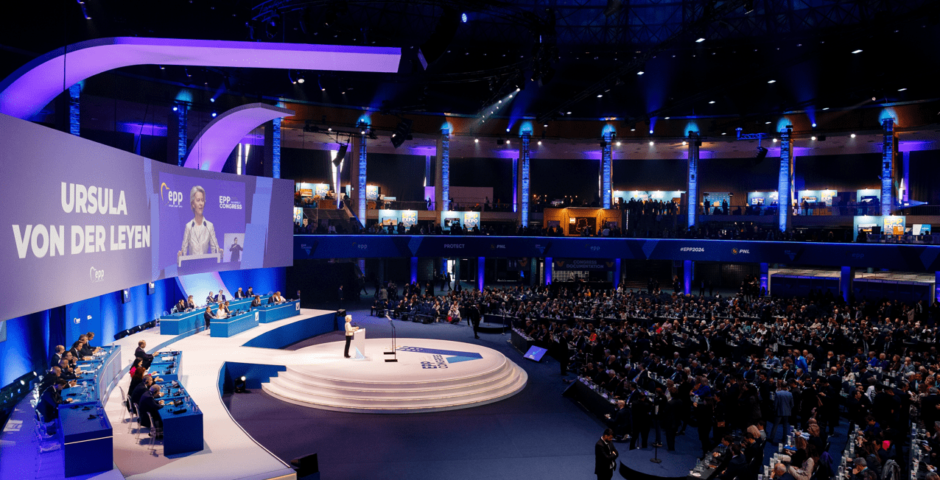
What is the Spitzenkandidaten procedure and who are the Spitzenkandidaten?
Ursula von der Leyen, Nicolas Schmit, Valérie Hayer, Sandro Gozi, Marie-Agnes Strack-Zimmermann, Bas Eickhout, Terry Reintke, Raül Romeva, Maylis Roßberg and Walter Baier.
Not all of these names will sound familiar to European citizens, but they are the Spitzenkandidaten of the European groups in the 2024 European Parliament elections.
During the upcoming European Parliament (EP) elections, not only 720 MEPs will be elected, but also the European ‘top jobs’ will be divided after the elections, including the President of the European Commission. The Spitzenkandidaten procedure aims to connect the presidency of the European Commission to the outcome of the EP elections. The European groups each elect their Spitzenkandidat who runs for the Commission presidency on behalf of the group. This means that after the elections, the Spitzenkandidat of the winning group will be nominated to become President of the European Commission. The procedure’s name is derived from the German word Spitzenkandidat, which means ‘lead candidate’. (Most) European groups appoint one or more Spitzenkandidaten, who run a pan-European campaign.
The Spitzenkandidaten were introduced in the 2014 EP elections under the slogan “This time it’s different”. In 2014, this new procedure was followed and the Spitzenkandidat of the largest group became President of the European Commission. However, in the subsequent elections in 2019, the procedure was not followed. The European People’s Party (EPP) won the most seats, but the current Commission President, Ursula von der Leyen (EPP), was not the group’s Spitzenkandidat. Nevertheless, the Spitzenkandidaten procedure will be given a new chance in the upcoming elections. This explainer looks at the background and functioning of the Spitzenkandidaten procedure. It also discusses what we can expect from the procedure in these elections and who the Spitzenkandidaten are.
Background of the procedure
The introduction of the Spitzenkandidaten procedure was an attempt to politicise European politics. Even though European elections revolve around the European Parliament, the campaigns are mainly at the national level and usually focus on national themes. The European elections also appear to be a mid-term judgment of the functioning and performance of national governments. Moreover, turnout for the European elections is much lower than for national elections. In addition, the lack of awareness of politicians at the EU level is a problem.
To address these issues and increase participation in European politics, several attempts have been made by the European Union (EU) to involve citizens more in European politics, including the Spitzenkandidaten procedure. It was hoped that the introduction of the Spitzenkandidaten would give a real European dimension to the campaigns. In addition, it had to personalise European politics. European citizens would then know who the politicians they vote for are because they recognise them from the media. This was intended to reduce the distance between European citizens and their representatives in Brussels and increase participation in European politics.
Furthermore, it had to contribute to the transparency and democratic legitimacy of the appointment of the Commission President. With the introduction of this procedure, the votes of European citizens would also influence the European Commission, the executive power of the EU. This way, the European elections would be more similar to national elections since in national politics, the party leader of the winning party usually becomes the head of government. In short, the new procedure would contribute to the personalisation of European politics and European citizens would play a more prominent role in the EU’s democratic process.
The procedure is based on Article 17(7) of the Lisbon Treaty (2007). It states that: “Taking into account the elections to the European Parliament and after having held the appropriate consultations, the European Council, acting by a qualified majority, shall propose to the European Parliament a candidate for President of the Commission.” This ambiguous formulation could be interpreted in different ways. The final interpretation was that the outcome of the elections must be respected when choosing the President of the Commission. In this way, the presidency of the Commission is connected to the results of the EP elections.
The Spitzenkandidaten procedure in practice
A candidate for the President of the European Commission is proposed by the European Council, after which the EP must approve by an absolute majority. The procedure received mixed reactions; in particular, the government leaders are reluctant. This is because the procedure means a decrease in their power over who they propose as Commission President. Before the Spitzenkandidaten procedure existed the candidate was determined via little transparent compromises. With the introduction of the procedure, this would be more transparent.
With the procedure, the EP strengthened its powers. In the run-up to the 2019 elections, the EP had even stated that it was “ready to reject any candidate in the investiture procedure of the President of the Commission who was not appointed as a ‘Spitzenkandidat’ in the run-up to the European elections.” However, this promise did not hold and Von der Leyen (as a non-Spitzenkandidat) was approved, nevertheless.
The Spitzenkandidaten are elected by their European party families. Politicians who aspire this position can put themselves forward as candidates. Then, their European group will vote about the Spitzenkandidat at a European party conference.
Although citizens can now influence to some extent who the Commission President will be, this does not mean that every EU citizen can directly vote for every Spitzenkandidat. The Spitzenkandidaten can only be on the electoral list in their own Member State – and in some Member States only in specific constituencies. Hence, a vote for this Spitzenkandidat from a citizen from another Member State is an indirect vote. In 2019, Frans Timmermans was the Spitzenkandidat for the Socialists & Democrats (S&D). Dutch people could vote for him because he was on the PvdA list, but citizens from other Member States could not. A vote in Spain for the Spanish PSOE or in Germany for the SPD ended up with the European S&D group and was, therefore, indirectly a vote for Timmermans in his race for the presidency of the Commission. There are also Spitzenkandidaten who are not on any list and for whom no one can vote. These candidates are only running for Commission President and are not candidates to become MEPs.
The Spitzenkandidaten procedure in previous elections
In 2014, five European groups appointed a Spitzenkandidat (or a duo of Spitzenkandidaten): EPP, S&D, ALDE, the Greens, and the European Left. The EPP group got the most votes in the elections and although not everyone favoured the procedure, their Spitzenkandidat Jean-Claude Juncker became President of the European Commission. In 2019, more groups appointed a Spitzenkandidat. The European Conservatives and Reformists (ECR) and the European Free Alliance (EFA) also appointed Spitzenkandidaten in these elections. The Liberals, mainly due to pressure from France, did not select one, but a ‘team’ of Spitzenkandidaten. The EPP group again became the largest in the 2019 elections, but this time, not Spitzenkandidat Manfred Weber, but Ursula von der Leyen became the new President of the Commission.
The Spitzenkandidaten campaigned for their group in the entire EU. For example, Timmermans stood at a Spanish rally together with PSOE politicians (the Spanish socialist party that is part of S&D). Spitzenkandidaten debates were also organised and could be viewed in the entire EU. However, the viewing rates were not very high, and the debates did not have the fierceness compared to national debates. Nevertheless, they did show the European character of the elections.
Despite all efforts, the introduction of the procedure did not immediately lead to greater involvement and participation of citizens. Moreover, the European elections still mainly had a national character. The Spitzenkandidaten were little visible in the media and if they were, it was primarily in a national context.
Spitzenkandidaten in the 2024 elections
After the procedure was not followed in the 2019 elections, the question was, of course, what would happen to the Spitzenkandidaten in 2024. Although the procedure was not officially abandoned, the future of the Spitzenkandidaten procedure was uncertain for a long time. Yet, the majority of the groups have elected Spitzenkandidaten again. Two groups, ECR and Identity & Democracy (I&D), are outspoken opponents of the principle and did not appoint Spitzenkandidaten. ECR believes the EP does not have the powers related to the Spitzenkandidaten procedure. These groups do, however, intend to participate in debates. I&D has appointed a ‘representative’ to participate: Anders Vistisen of the right-wing populist Danish People’s Party. The pan-European party Volt, which has a different structure than the European groups, has appointed two Spitzenkandidaten for the upcoming EP elections: the German Damian Boeselager and the Dutch Sophie in ‘t Veld. The European Pirate Party – not recognised as a European political group – also appointed two Spitzenkandidaten: Marcel Kolaja from the Czech Republic and Anja Hirschel from Germany.
The upcoming elections are important for the future of the procedure. If, similar to 2019, the President of the Commission is not a Spitzenkandidat the procedure will lose all credibility. It could also be argued that the real test of the procedure will be in 2029. There is great support in the EU – among government leaders – for a second term of Von der Leyen. The polls predict that the EPP will become the largest group again, and via this procedure, a second term of Von der Leyen will have more legitimacy. Given the challenges the EU faces – among other things, two wars, the climate crisis, and defence issues – a second term of Von der Leyen guarantees continuity and stability of the EU’s path.
Nevertheless, more Spitzenkandidaten will participate in the debates and go on an election campaign tour through Europe. The Maastricht debate takes place on 29 April 2024, organised by Studio Europa and Politico. In the run-up to the previous elections, the European University Institute in Florence also organised a debate with the Spitzenkandidaten. Its annual State of the Union conference takes place between 23 and 25 May 2024. At the time of writing, the organisation indicates that there is a ‘possibility’ to organise a Spitzenkandidaten debate. There will also be another debate in the European Parliament on 23 May. In the 2014 and 2019 elections, this was the last Spitzenkandidaten debate before the elections. There were also debates in the previous elections in which not all candidates participated.
Personalising European politics is important to familiarise European citizens with and involve them in European politics. In addition, the European elections need a truly European character to stress the importance of the elections and to emphasise the difference with national elections. The Spitzenkandidaten procedure is the perfect opportunity to achieve this goal. Although the campaigns have already started, few people know the Spitzenkandidaten. Yet, it is important to be aware of who the Spitzenkandidaten are because, as explained, the national vote also indirectly ends up with a Spitzenkandidat. Therefore, an overview of the Spitzenkandidaten in the upcoming elections in June is given below.
Spitzenkandidaten 2024
European People’s Party: Ursula von der Leyen
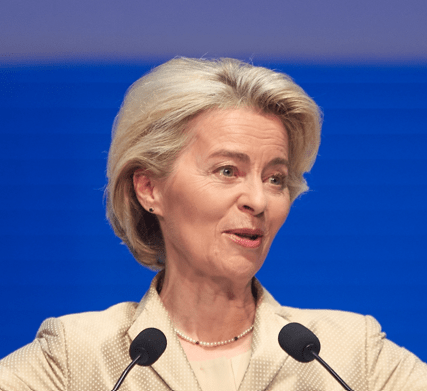
Ursula von der Leyen. Source: Shutterstock
Germany’s Ursula von der Leyen is the current President of the European Commission. Von der Leyen is known as a technocrat and control freak. Under her leadership, European politics has been given a ‘face’ and she has led the EU through many crises over the past five years. There is a good chance that Von der Leyen will stay on for another term; she is popular among government leaders (who officially nominate her), and according to the polls, the EPP remains the largest group. However, no one can vote for Von der Leyen as she is not running in the elections for a seat in the EP. She is not on her party’s list and, therefore German citizens in her constituency cannot vote for her.
Socialists & Democrats: Nicolas Schmit
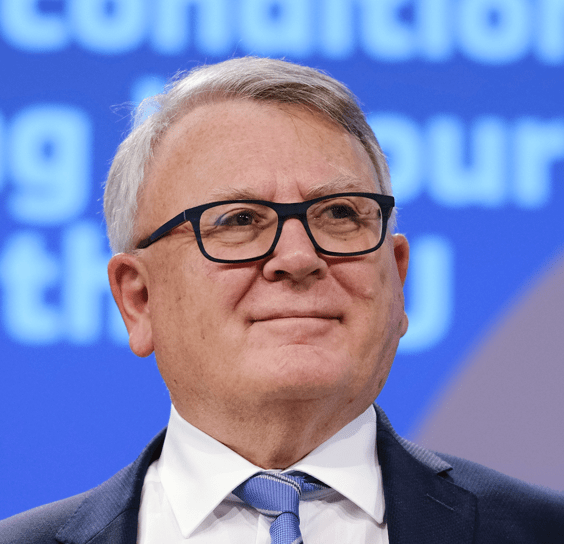
Nicolas Schmit. Source: Shutterstock
Luxembourgian Nicolas Schmit is currently the European Commissioner for Jobs and Social Rights. He is committed to a better European social policy. Although Schmit is relatively unknown outside Brussels, his political experience could be beneficial to the European socialists. Since they will probably become the second European group, and the presidency of the Commission then is beyond reach, they are focusing on the presidency of the European Council (now Charles Michel, ALDE). Schmit’s experience and influence could strengthen the socialists’ negotiating position in dividing the top jobs. No EU citizen can vote for Schmit since he will not be on a party list either.
Renew Europe: Valérie Hayer, Sandro Gozi and Marie-Agnes Strack-Zimmermann
The European liberals in the EP are gathered in Renew Europe. This group consists of different groups with slightly different interests. This includes ALDE, the European Democratic Party, and Renaissance, Emmanuel Macron’s party. The three candidates represent each of these three groups.
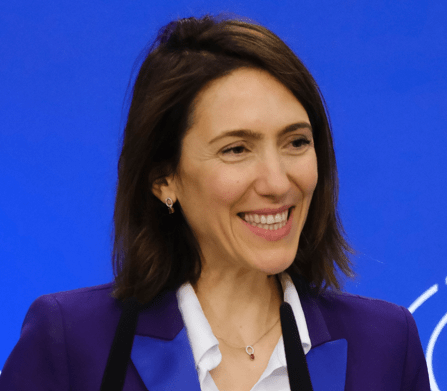
Valérie Hayer, Source: Shutterstock
Valérie Hayer has been in the European Parliament since 2019 and is currently the President of Renew Europe. She is a Member of the French Renaissance Party and is a close ally of Macron. Hayer comes from a farming family, which can be an asset in the current agricultural discussions. She has also dealt with, among other things, the EU budget.
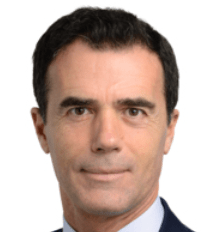
Sandro Gozi. Source: European Parliament
Sandro Gozi is an Italian politician who has been a Member of the European Parliament for the French Renaissance since 2020 (after the redistribution of seats after Brexit). He is part of the Internal Market and Consumer Protection Committee and the Constitutional Affairs Committee. Gozi is the Secretary General of the European Democratic Party (EDP). Previously, he was involved in European affairs in Italian politics.
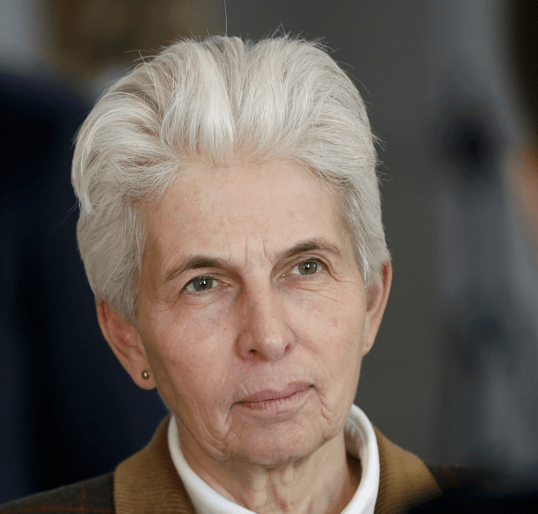
Marie-Agnes Strack-Zimmermann. Source: Shutterstock
Marie-Agnes Strack-Zimmermann is a German political heavyweight, who is popular among the German population. Strack-Zimmermann is a Member of the Free Democratic Party (FDP) and has been in the German Bundestag since 2017. At the national level, she focuses on defence, and at the European level, Strack-Zimmermann will focus on security issues as well. Strack-Zimmermann will be the one to participate in the debate in Maastricht on behalf of the liberals.
The Greens: Bas Eickhout and Terry Reintke
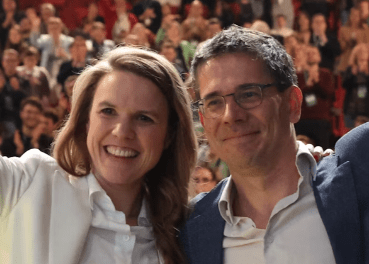
Bas Eickhout en Terry Reintke. Source: European Greens
The German Terry Reintke has been in the European Parliament since 2014 and is co-chair of the Greens/EFA since October 2022. She focuses, among other things, on social and women’s rights.
The Dutch Bas Eickhout has been in the European Parliament since 2009 and is part of the Committee on the Environment, Public Health and Food Safety, among other things. Eickhout has also participated as a Spitzenkandidat for the Greens in 2019 (then as a duo with Ska Keller).
European Free Alliance: Raül Romeva and Maylis Roßberg
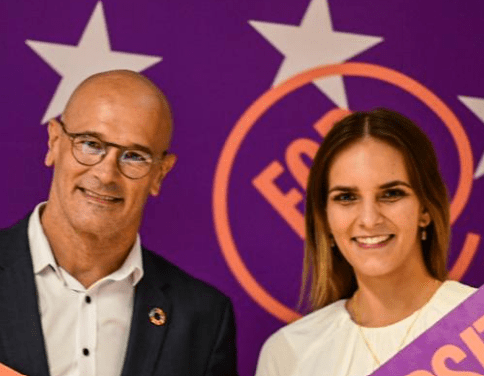
Raül Romeva and Maylis Roßberg. Source: European Free Alliance
Raül Romeva is a Spanish politician who was a Member of the European Parliament from 2004 to 2014. He was involved in the Catalan independence referendum and is still barred from holding public office. Hence, he has no chance of becoming President of the European Commission, but he will campaign on behalf of the EFA.
Maylis Roßberg is from the Südschleswigschen Wählerverbands party, a centre-left regionalist party that represents the Danish minority in Schleswig, Germany, and the national Frisians from North Frisia (Germany). Although it is unlikely that the new President of the Commission will be from the EFA, the candidates do not consider their role symbolic but activist. In the campaign, they want to put topics on the political agenda that are usually ignored.
European Left: Walter Baier
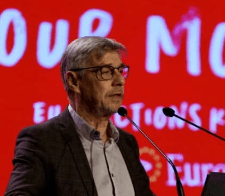
Walter Baier. Source: European Left
Walter Baier is a member of the Communist Party of Austria (KPÖ) and chair of the European Left since December 2022. Baier is not on the list of his national party either, and is, therefore, not a candidate for the European Parliament. Baier advocates putting the working class at the centre of the fight against the climate crisis.
These are the Spitzenkandidaten who will be running a pan-European campaign on behalf of their groups in 2024. So, remember these names, they will soon be featured in their first real Spitzenkandidaten debate.
Hanna Krijgsman van Spangenberg holds a master’s degree in Political Science from Vrije Universiteit Amsterdam and a bachelor’s degree in European Studies from the University of Amsterdam with a major in European history.
Header image: Shutterstock




